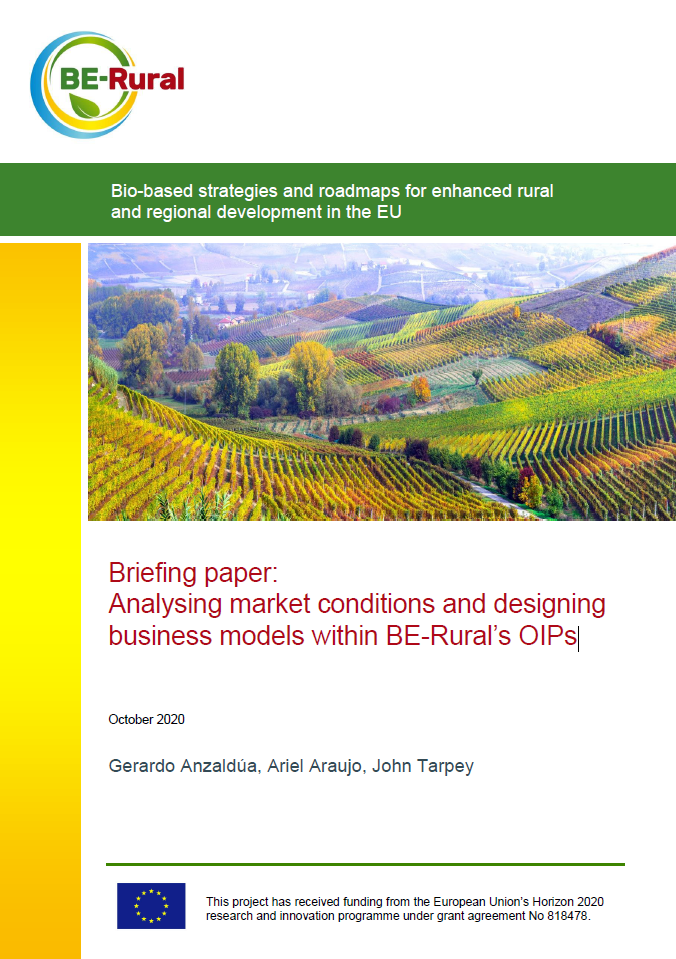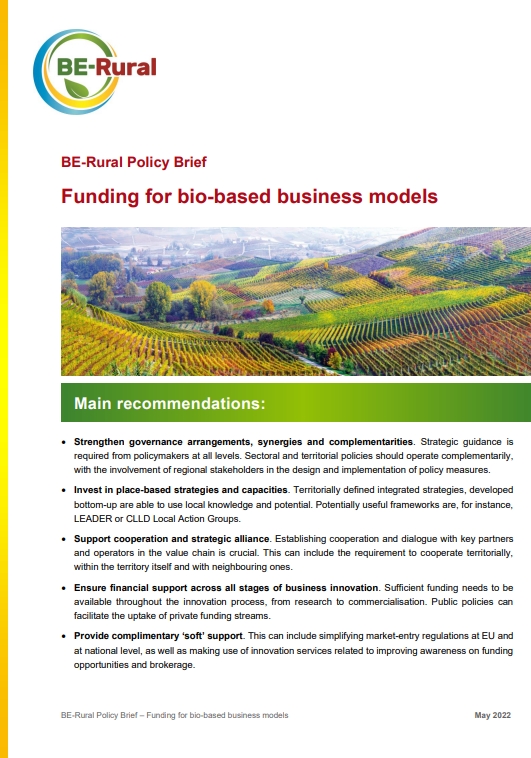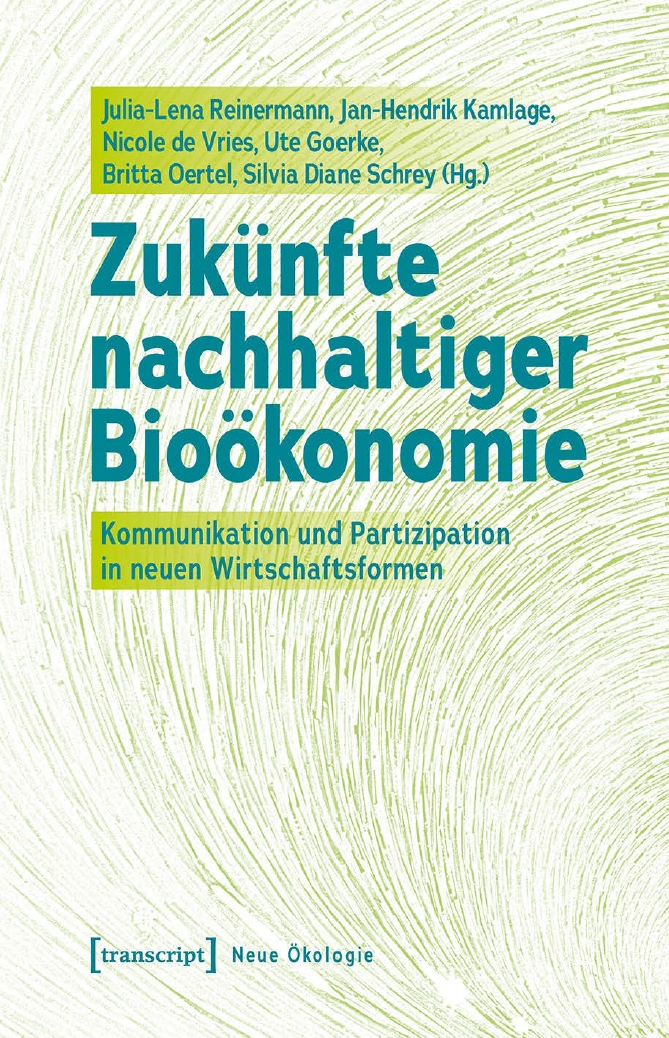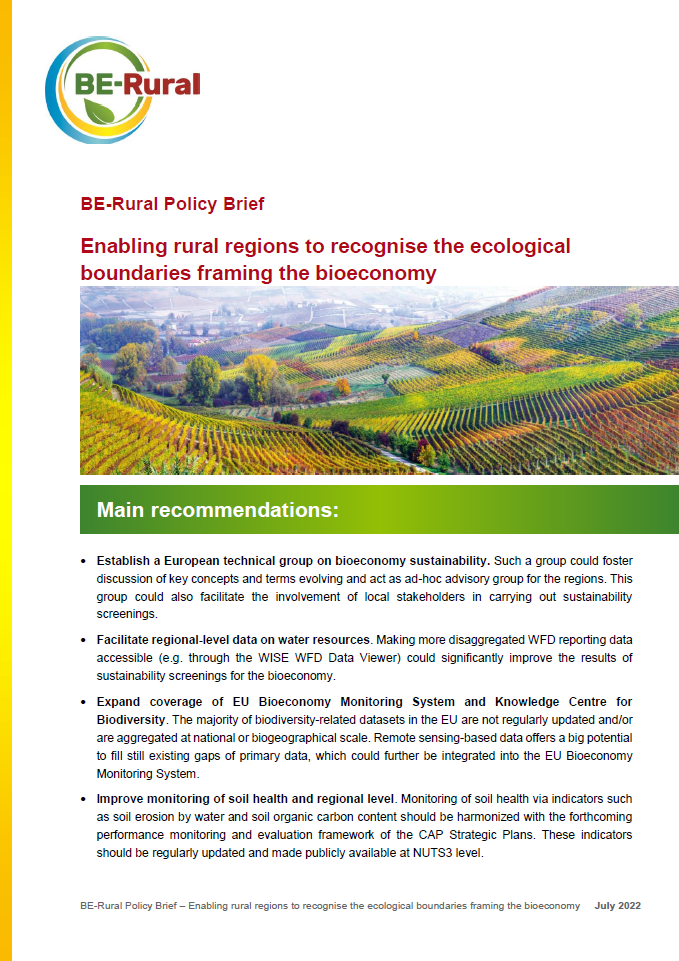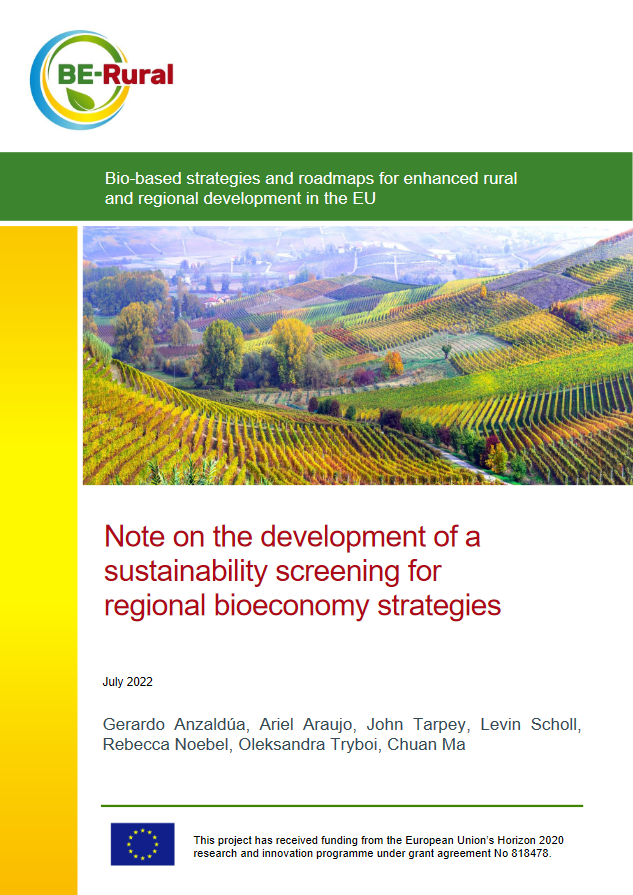Analysing Market Conditions and Designing Business Models within BE-Rural's OIPs
Deliverable 5.1 H2020 research project BE-Rural
- Publication
- Citation
Gerardo Anzaldua, Ariel Araujo, John Tarpey (2020). D5.1: Analysing market conditions and designing business models within BE-Rural's OIPs. Briefing paper. Deliverable of the H2020 BE-Rural project
This hands-on guidance document supports regional actors in designing viable business models for the bioeconomy. Based on practical experiences from five Open Innovation Platforms (OIPs) across Europe, it outlines how to analyse regional market conditions, engage diverse stakeholders and translate promising bio-based product ideas into actionable business strategies. The result: a modular toolkit to unlock local biomass potential and drive sustainable rural development.
Empowering Regional Bioeconomies through Business Model Innovation
To foster sustainable, inclusive and place-based bioeconomy strategies in rural Europe, the BE-Rural project has developed a practical framework for market assessment and business model design. Aimed at OIP facilitators and regional stakeholder groups, this document provides structured support for co-creating locally adapted business concepts based on region-specific biomass streams.
Setting the Scene: From Context Analysis to Technology Options
The foundation of this approach lies in a comprehensive analysis of each region’s political, economic, social, technological, environmental and legal (PESTEL) conditions. Paired with data on biomass availability and utilisation barriers, the document enables a targeted exploration of feasible technologies and value chains – from agricultural residues to aquatic biomass and forest-based resources.
Task Forces as Engines of Bio-Based Innovation
Central to the methodology is the creation of a Task Force on Market Assessment and Business Model Design within each OIP. These multi-actor groups apply the Quintuple Helix Innovation Model, bringing together knowledge and resources from academia, industry, policy, civil society and the natural environment. They serve as agile teams to drive forward user-centric product development, leveraging local know-how and stakeholder input.
Structured Tools: Seven Steps Towards a Bio-Based Business Model
The document introduces a seven-step assessment framework, designed for non-specialists and field-tested in EU-funded innovation projects. Activities include market segmentation, target group selection, SWOT analysis and the use of a tailored Business Model Canvas adapted for the bioeconomy context. Templates and guidance are provided throughout to support capacity building and stakeholder learning.
Outlook: From Business Model to Regional Bioeconomy Strategy
Beyond its function as a design tool, the framework encourages integration of market insights into broader regional bioeconomy strategies. It fosters reflective learning processes and aims to create enabling conditions for long-term transformation through localised, circular value chains.
